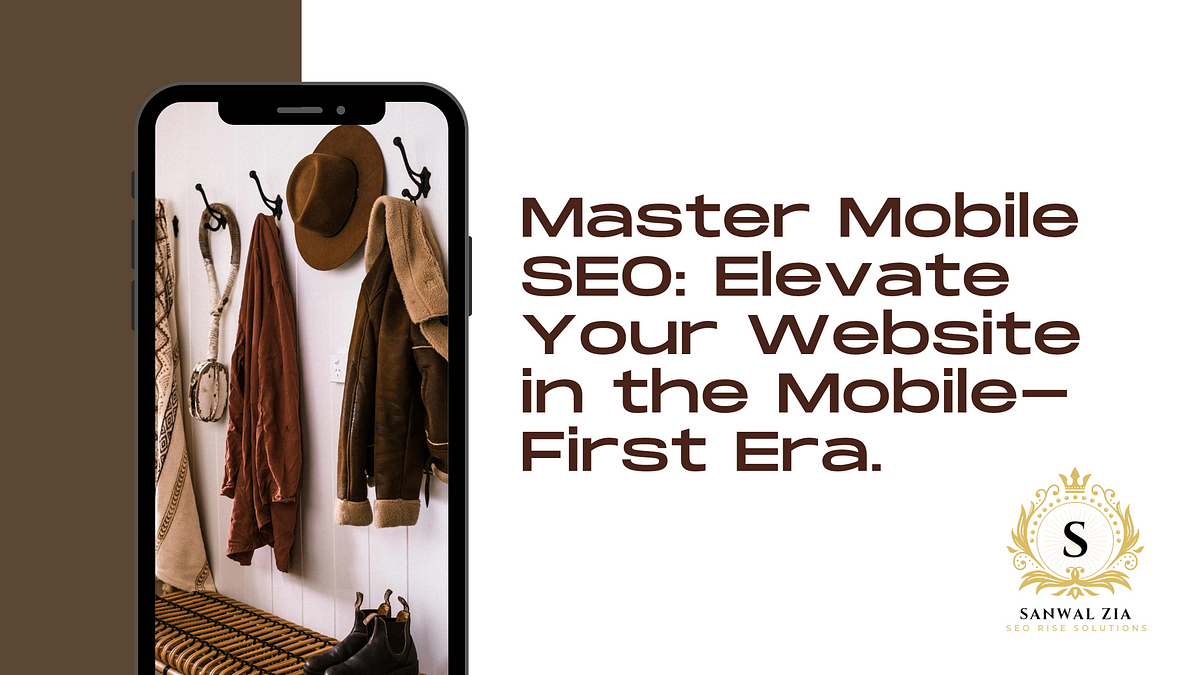Mobile SEO: Your Ultimate Guide to Optimizing for Success in the Mobile-First Era
In today’s digital landscape, mobile devices are not just another way to access the internet—they are often the primary means for many users. As mobile browsing continues to surge, optimizing websites for mobile devices has become a priority. Mobile SEO (Search Engine Optimization) is crucial for ensuring that your website ranks well in search engines and offers a seamless user experience on mobile devices. This article will explore why mobile SEO is essential, the challenges it presents, best practices to improve your site’s mobile performance, and strategies to attract mobile users.
Understanding Mobile SEO
Definition and Importance
Mobile SEO refers to the practice of optimizing a website to ensure that it provides an excellent experience for mobile users. This involves making sure that content loads quickly, is easy to navigate, and displays correctly on smaller screens. As search engines increasingly prioritize mobile-friendly sites, businesses that neglect mobile SEO risk losing valuable traffic and potential customers. With the rise of mobile usage, failing to cater to mobile users could mean missing out on significant growth opportunities.
Mobile-First Indexing
Search engines like Google have adopted mobile-first indexing, meaning that they primarily use the mobile version of a website for indexing and ranking purposes. If your website doesn’t deliver a positive experience on mobile, it could significantly impact your search engine ranking. This shift acknowledges that the majority of searches are performed on mobile devices, and websites need to be optimized for mobile responsiveness to remain competitive.
Best Practices for Mobile SEO
Responsive Web Design
Responsive web design is an approach that makes your website adapt to different screen sizes. This ensures that your website looks and functions well on devices ranging from desktop computers to smartphones. Google recommends using responsive design to make your site more mobile-friendly. Instead of maintaining separate versions of your website for desktop and mobile, a responsive design creates a unified user experience that adapts to the user’s device.
Fast Loading Times
Mobile users expect quick load times. Research shows that users often abandon sites that take longer than three seconds to load. Optimize images, minimize code, and leverage browser caching to speed up your website. Additionally, consider reducing the number of HTTP requests, using Content Delivery Networks (CDNs), and compressing files to improve speed.
Clear Navigation
Mobile screens are smaller, so navigation needs to be simple and intuitive. Use clear menu structures, minimize clicks, and ensure that buttons and links are easily tappable. Dropdown menus and collapsible navigation can help condense information into an accessible format without cluttering the screen.
Readable Content
Content should be easy to read on mobile devices. Use legible fonts, appropriate font sizes, and sufficient spacing. Break up content into short paragraphs to improve readability. Incorporate subheadings and bullet points to guide the reader through the content more efficiently.
Challenges in Mobile SEO
Technical Constraints
Mobile devices vary greatly in screen size, processing power, and internet speed. This requires technical expertise to ensure that the website remains compatible across devices. Testing your website on multiple devices can help you identify and fix compatibility issues.
Content Prioritization
Unlike desktop browsing, mobile users may have limited time or attention spans. It becomes crucial to prioritize content that immediately addresses user needs, providing key information upfront and minimizing distractions.
Strategies for Boosting Mobile SEO
Local SEO
Mobile users often search for local businesses while on the go. Optimize your website for local searches by including accurate business information like name, address, and phone number. Create a Google Business Profile and encourage customer reviews to improve visibility. Local keywords and location-based landing pages can also enhance your local SEO efforts.
Voice Search Optimization
Voice search is growing in popularity, with more users relying on smart assistants like Siri, Google Assistant, and Alexa. Optimize for voice searches by using natural language and question-based keywords. Include an FAQ section to address common queries, and use structured data markup to help search engines understand your content better.
Accelerated Mobile Pages (AMP)
AMP is a framework designed to make mobile web pages load faster. Implement AMP for news articles or blog posts to improve load times and potentially increase visibility in search results. While not necessary for all types of content, it can be advantageous for content-heavy pages.
Mobile Analytics
Use analytics tools to monitor how mobile users interact with your website. Identify potential issues like high bounce rates or low engagement, and adjust your strategy accordingly. Understanding user behavior helps refine your mobile SEO strategy and enhances the overall mobile experience.
Conclusion
In a world dominated by mobile browsing, optimizing for mobile SEO is not just beneficial—it’s essential. By implementing best practices like responsive design, fast loading times, voice search optimization, and local SEO, businesses can improve their search engine rankings and provide a better user experience for mobile visitors. Whether you’re running a local business or a global enterprise, adopting these mobile SEO strategies can help you thrive in the mobile-first era.
Meet the Author
I am Sanwal Zia, an SEO consultant, data analyst, and author with 4 years of experience in the field. My book, SEO Beyond Basics: Mastering Advanced Tactics, provides in-depth insights into technical SEO. I also hold 38 digital marketing certificates from organizations like Google, Semrush, HubSpot, Coursera, Great Learning, and BrightLocal. Follow my LinkedIn profile for more valuable tips and strategies to elevate your digital marketing game!





